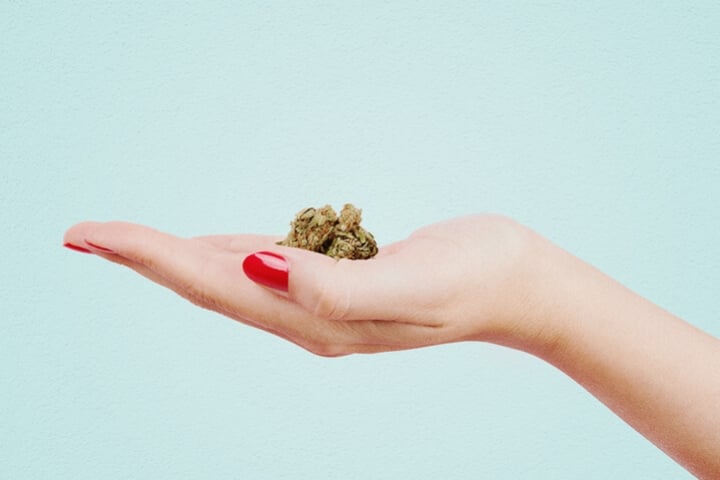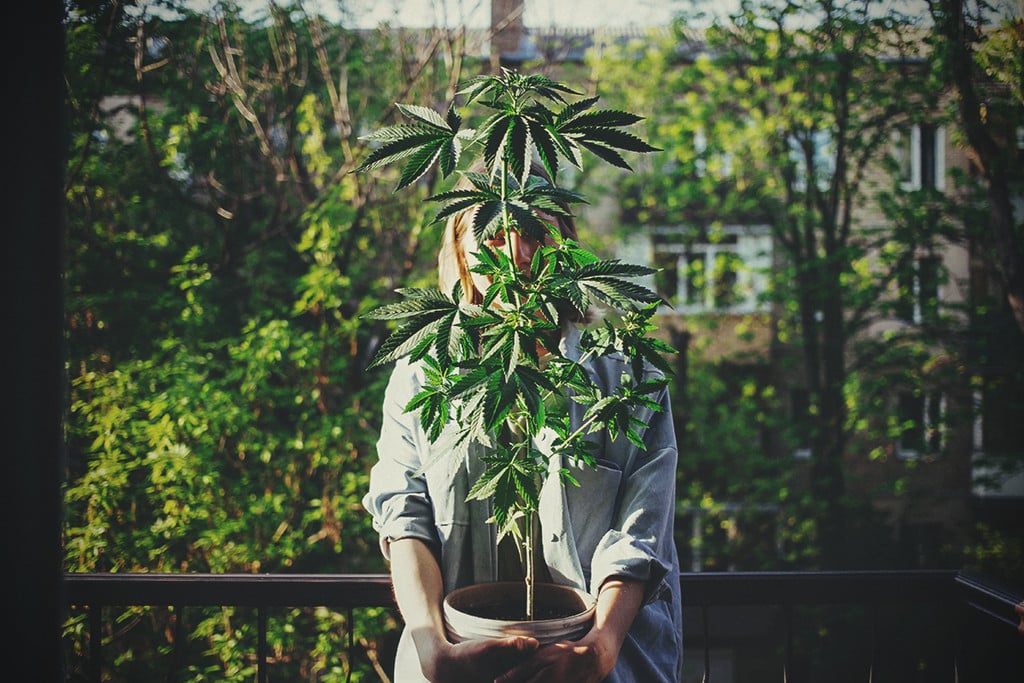.

Does Cannabis Affect Men And Women Differently?
How does cannabis affect women vs men? And, how do patterns of cannabis use differ among the sexes? Read on as we dive into the science, and anecdotal findings, behind these questions.
Contents:
The effects of cannabis are pretty predictable, yet a lot of factors can influence its final result on the body. Likewise, many factors can influence our cannabis habits, and one of them appears to be sex.
DOES SEX INFLUENCE THE EFFECTS OF CANNABIS?
The prevalence of cannabis use differs slightly between men and women. Young men tend to use cannabis more than young women, and this ratio increases further among adults. Patterns of use also differ based on sex and gender roles. Researchers are trying to pinpoint how sex hormones influence mammals’ sensitivity to psychotropic substances, cannabis included, while the variation in cannabis use among men and women in different countries suggests an environmental and cultural influence. Besides hormones, there are other potential sex-related factors driving our cannabis use.
HOW DOES CANNABIS USE DIFFER BETWEEN MEN AND WOMEN?
Men seem more prone to using psychotropic substances than women, and in larger quantities. When it comes to cannabis, men usually report more intense effects than women, and are more likely to develop some sort of dependence. As with any other substance, both genetic and environmental factors play a role in cannabis use patterns. Although it’s clear that genetic factors can increase or decrease our risk of abuse, there is no evidence of specific gene variants that alter cannabinoid sensitivity.
At Yale School of Medicine, gender-sensitive treatments for tobacco dependence discovered that in men, the rewarding effects of nicotine play a more important role than in women, who appear to smoke more to reduce stress. In men, dopamine is released in a part of the brain associated with reward and reinforcement. In women, dopamine tends to be released in an area associated with behaviours in response to negative inputs. Cannabinoids work differently than nicotine, yet the result of this research might hint at a broader phenomenon. Indeed, other research indicates that women are more likely to use cannabis for “functional reasons” such as pain and anxiety control.
WHY DOES CANNABIS AFFECT MEN DIFFERENTLY THAN WOMEN?
Research supports the possibility of a dimorphic effect of cannabinoids based on sex hormones. The endocannabinoid system’s close interaction with sex hormones provides a biological foundation for sexual differences in behaviours related to reward and well-being that drive cannabis use patterns. CB1 receptor density can be altered by sex hormones, which can also modulate levels of endocannabinoids and their metabolising enzymes. Moreover, the recent discovery that pregnenolone, the precursor of all steroid hormones, can directly modulate cannabinoid receptor activation supports the concept of a tight link[1] between sex hormones and the endocannabinoid system.
| SEX-RELATED FACTORS THAT AFFECT CANNABIS RESPONSE | |||||
|---|---|---|---|---|---|
| GENES | HORMONES | ||||
| PHYSIOLOGY & ANATORMY | NEURO BIOLOGY | ||||
| SEX-RELATED FACTORS THAT AFFECT CANNABIS RESPONSE | |||||
|---|---|---|---|---|---|
| GENES | HORMONES | ||||
| PHYSIOLOGY & ANATORMY | NEURO BIOLOGY | ||||
| GENDER RELATED FACTORS THAT AFFECT CANNABIS RESPONSE | |||||
|---|---|---|---|---|---|
| IDENTITY | ROLES | ||||
| RELATIONS | INSTITUTIONAL | ||||
| GENDER RELATED FACTORS THAT AFFECT CANNABIS RESPONSE | |||||
|---|---|---|---|---|---|
| IDENTITY | ROLES | ||||
| RELATIONS | INSTITUTIONAL | ||||
HOW DOES CANNABIS AFFECT WOMEN?
Many women report enhanced sensations and confidence after using cannabis. As a side effect, it appears that girls are more likely to suffer temporary visual alterations and memory impairments after using cannabis than boys. Furthermore, a 2015 study[2] by researchers at Johns Hopkins University School of Medicine aimed to understand the difference in cannabis withdrawal symptoms between men and women. Women reported more symptoms and a higher overall level of discomfort than men, suffering from typical symptoms such as irritability, restlessness, and gastrointestinal discomfort.
Studies on rats show that the hormone estradiol can modulate the endocannabinoid system, whose feedback then influences estradiol production. Female rats have different levels of endocannabinoids and more sensitive receptors than males in key areas of the brain related to control of movement, social behaviour, and filtering of sensory input, with significant changes along the menstrual cycle.
Interactions between the endocannabinoid system and the brain’s production of dopamine are therefore sex-dependent, and consequently might also influence the cannabinoid-induced feelings of "pleasure" and "reward". Other experiments have found the pain-relieving effects of THC to be more effective in female rats as well. However, they need higher doses of THC than male rats over time to obtain the same effects.
HOW DOES CANNABIS AFFECT MEN?
Regardless of the influence of hormone cycles, it has been shown that CB1 receptor availability is lower in males. These quantitative differences in the endocannabinoid system might contribute to differences in effects and usage patterns between males and females. Moreover, the metabolic breakdown of cannabis itself may differ between the two.
It seems that men don’t need cannabis tolerance breaks as often as women do, and they might experience less pronounced withdrawal symptoms than women. On a possibly negative side, high levels of THC may temporarily result in low levels of testosterone, and exactly how cannabis affects sexual stimulation in men is debated. Both natural and synthetic male sex hormones increase risk-taking behaviour, thus we might argue that cannabis is actually useful in calming down some of boys’ risky attitudes. At the same time, compulsive cannabis use in males might also derive from these hormone-driven behaviours.
THERE IS STILL A LOT TO LEARN ABOUT CANNABIS’ EFFECTS ON MEN AND WOMEN
These preliminary scientific results help us understand potential differences in the effects and usage patterns of cannabis among men and women. We just don’t know exactly why, or how, to benefit from this distinction—at least not yet.
Controlled human studies are still very limited. Most of the sex differences[3] you may find are likely to be influenced by external factors. However, the gap between men’s and women’s social, medical, and personal use of cannabis[4] is shrinking, and we expect more research on this issue to come to light soon. Today, all we can theorise is that the mechanisms driving these differences reside in the availability of cannabinoid receptors, in metabolising processes, in hormones, or in a combination of the three.
Although anecdotal evidence claims that boys show a more compulsive use of psychotropic substances than girls, this hasn’t prevented women from gaining major leadership roles within the cannabis industry—but that’s another story.
- The Modulating Role of Sex and Anabolic-Androgenic Steroid Hormones in Cannabinoid Sensitivity https://www.ncbi.nlm.nih.gov
- Sex differences in cannabis withdrawal symptoms among treatment-seeking cannabis users. - PubMed - NCBI https://www.ncbi.nlm.nih.gov
- How important are sex differences in cannabinoid action? https://www.ncbi.nlm.nih.gov
- Sex Differences in Cannabis Use and Effects: A Cross-Sectional Survey of Cannabis Users https://www.ncbi.nlm.nih.gov






































